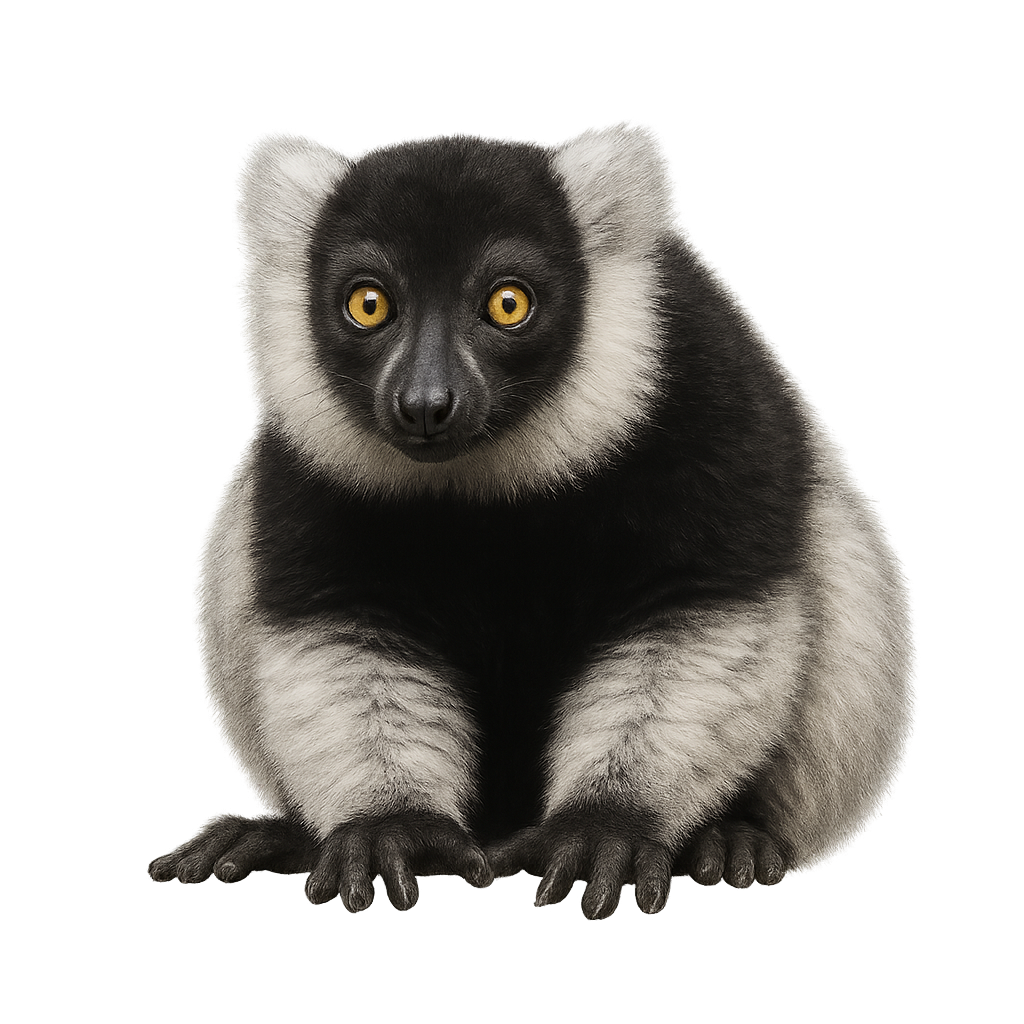Your wildlife photography guide.
Explore the black-and-white ruffed lemur in detail, study its behavior, prepare your shots.
Where to observe and photograph the black-and-white ruffed lemur in the wild
Learn where and when to spot the black-and-white ruffed lemur in the wild, how to identify the species based on distinctive features, and what natural environments it inhabits. The WildlifePhotographer app offers tailored photography tips that reflect the black-and-white ruffed lemur’s behavior, helping you capture better wildlife images. Explore the full species profile for key information including description, habitat, active periods, and approach techniques.
Black-and-white ruffed lemur
Scientific name: Varecia variegata

IUCN Status: Critically Endangered
Family: LEMURIDAE
Group: Mammals
Sensitivity to human approach: Suspicious
Minimum approach distance: 10 m
Rut period: May to July
Gestation: 90-102 jours
Births: August to September
Habitat:
Rainforests, lowland forests, montane forests
Activity period :
Primarily active during the day, with peak activity in the morning and late afternoon.
Identification and description:
The black-and-white ruffed lemur, or Varecia variegata, is a primate endemic to Madagascar, known for its distinctive black and white fur. It primarily inhabits the island's eastern rainforests. This lemur is diurnal and arboreal, spending most of its time in the canopy searching for fruits, flowers, and leaves. Social groups usually consist of two to five individuals, often led by a dominant female. Unfortunately, this species is critically endangered due to deforestation and hunting. Conservation efforts are crucial for its long-term survival.
Recommended lens:
400 mm – adjust based on distance, desired framing (portrait or habitat), and approach conditions.
Photography tips:
To photograph the black-and-white ruffed lemur, it is advisable to use a 400mm or longer telephoto lens to capture detailed images without disturbing the animal. The rainforests they inhabit can be dark, so a bright lens is an asset. Be patient and discreet to observe their natural behavior. Opt for early morning or late afternoon hours to take advantage of soft light.
The WildlifePhotographer App is coming soon!
Be the first to explore the best nature spots, track rutting seasons, log your observations, and observe more wildlife.
Already 1 430 wildlife lovers subscribed worldwide

